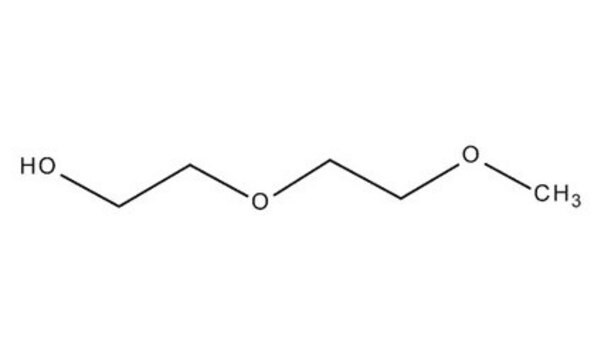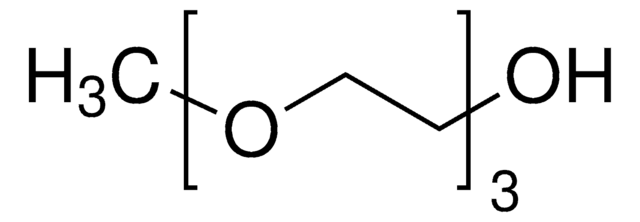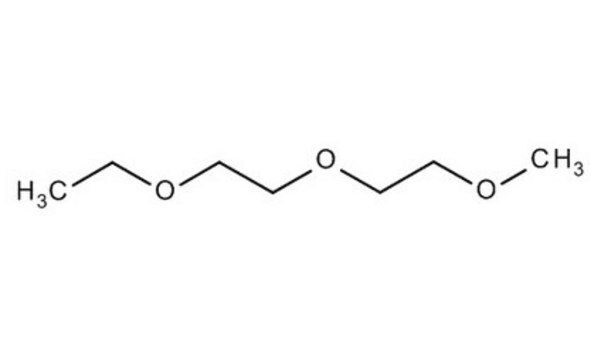579548
Diethylene glycol methyl ether
ReagentPlus®, ≥99.0%
Synonyme(s) :
2-(2-Methoxyethoxy)ethanol, Methyldiglycol
About This Item
Produits recommandés
Qualité
reagent
Densité de vapeur
4.14 (vs air)
Pression de vapeur
0.2 mmHg ( 20 °C)
Gamme de produits
ReagentPlus®
Essai
≥99.0%
Forme
liquid
Température d'inflammation spontanée
221 °C
Limite d'explosivité
1.38-22.7 %
dilution
(for general lab use)
Impuretés
≤0.1% (water)
Indice de réfraction
n20/D 1.426 (lit.)
pb
194 °C (lit.)
Pf
−70 °C (lit.)
Densité
1.023 g/mL at 25 °C (lit.)
Chaîne SMILES
COCCOCCO
InChI
1S/C5H12O3/c1-7-4-5-8-3-2-6/h6H,2-5H2,1H3
Clé InChI
SBASXUCJHJRPEV-UHFFFAOYSA-N
Vous recherchez des produits similaires ? Visite Guide de comparaison des produits
Description générale
Application
- Composition-explicit distillation curves of diesel fuel with glycol ether and glycol ester oxygenates: fuel analysis metrology to enable decreased particulate emissions.: Investigates the incorporation of diethylene glycol methyl ether into diesel fuels to reduce particulate emissions. This research is vital for environmental science, focusing on improving air quality and reducing the ecological impact of diesel engines (Smith BL et al., 2008).
Informations légales
Mention d'avertissement
Danger
Mentions de danger
Conseils de prudence
Classification des risques
Repr. 1B
Code de la classe de stockage
6.1C - Combustible acute toxic Cat.3 / toxic compounds or compounds which causing chronic effects
Classe de danger pour l'eau (WGK)
WGK 1
Point d'éclair (°F)
188.6 °F - closed cup
Point d'éclair (°C)
87 °C - closed cup
Faites votre choix parmi les versions les plus récentes :
Déjà en possession de ce produit ?
Retrouvez la documentation relative aux produits que vous avez récemment achetés dans la Bibliothèque de documents.
Les clients ont également consulté
Notre équipe de scientifiques dispose d'une expérience dans tous les secteurs de la recherche, notamment en sciences de la vie, science des matériaux, synthèse chimique, chromatographie, analyse et dans de nombreux autres domaines..
Contacter notre Service technique








